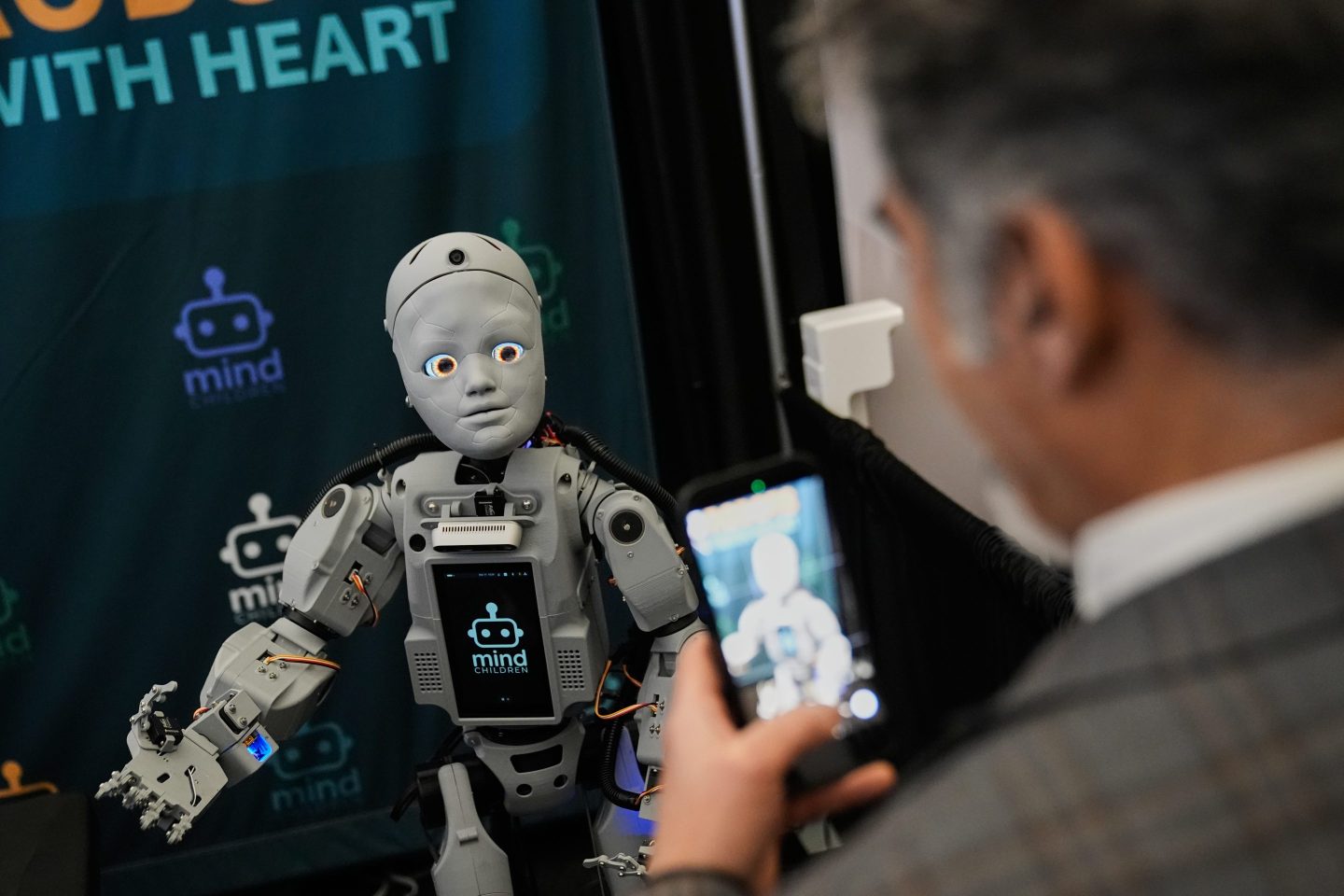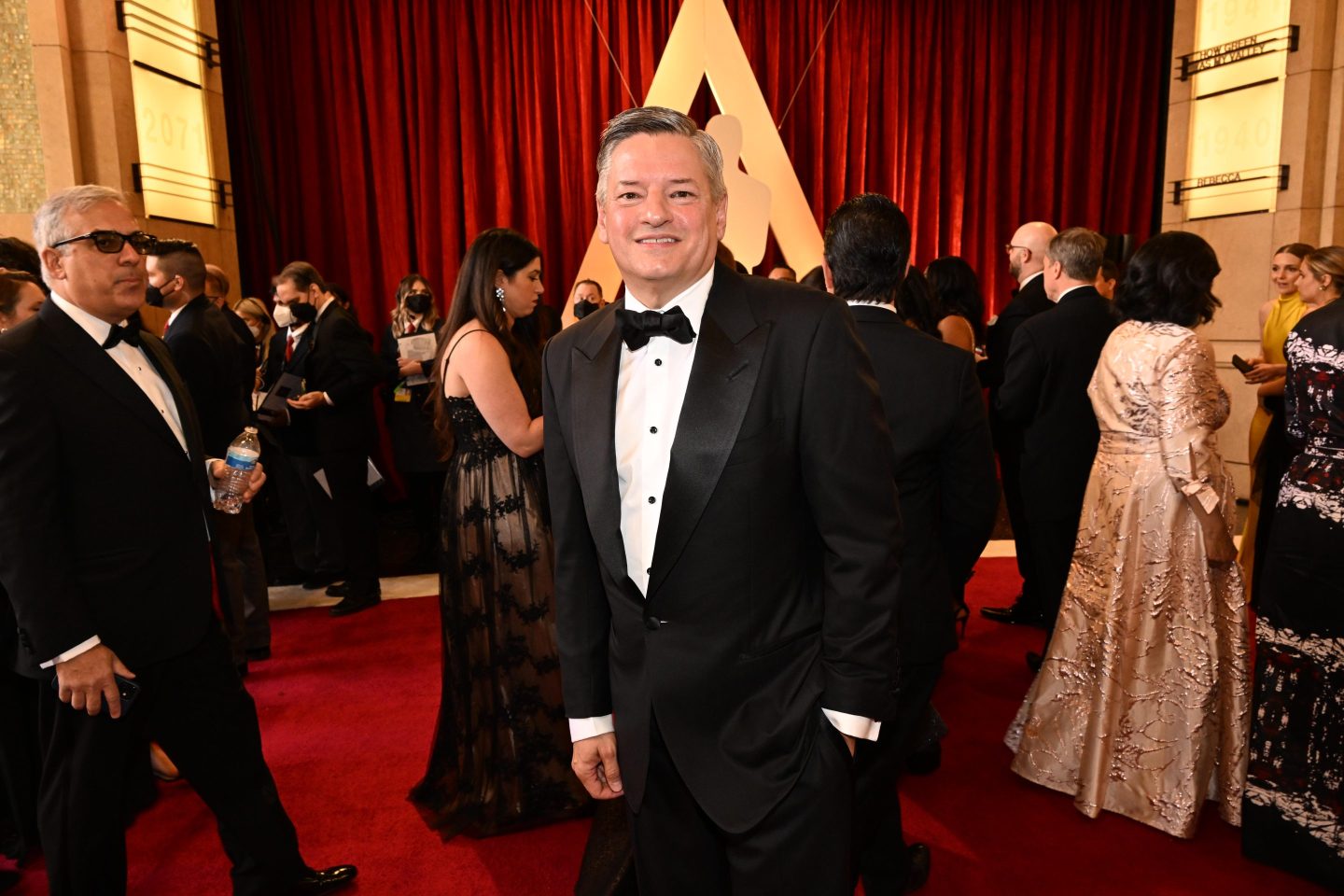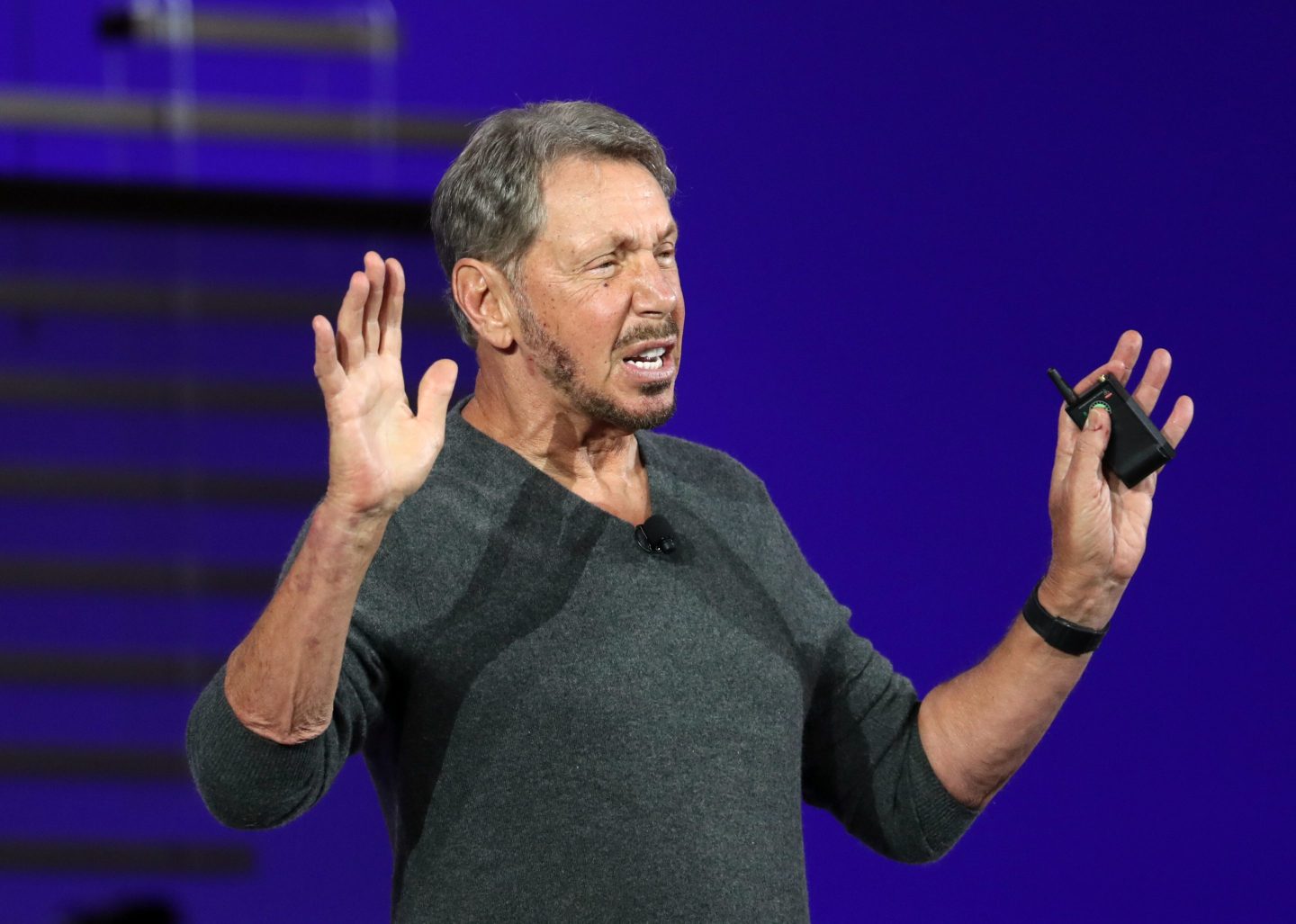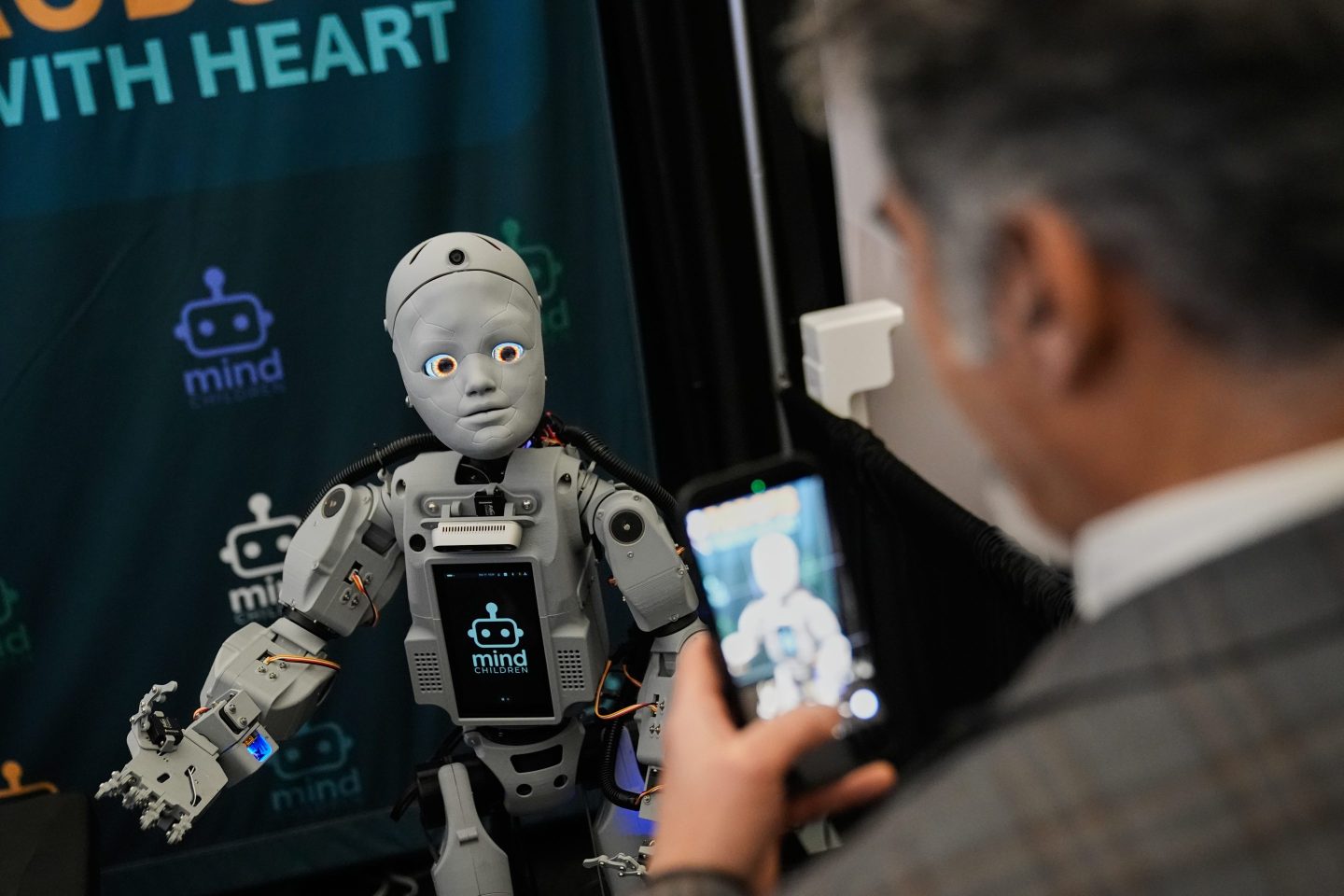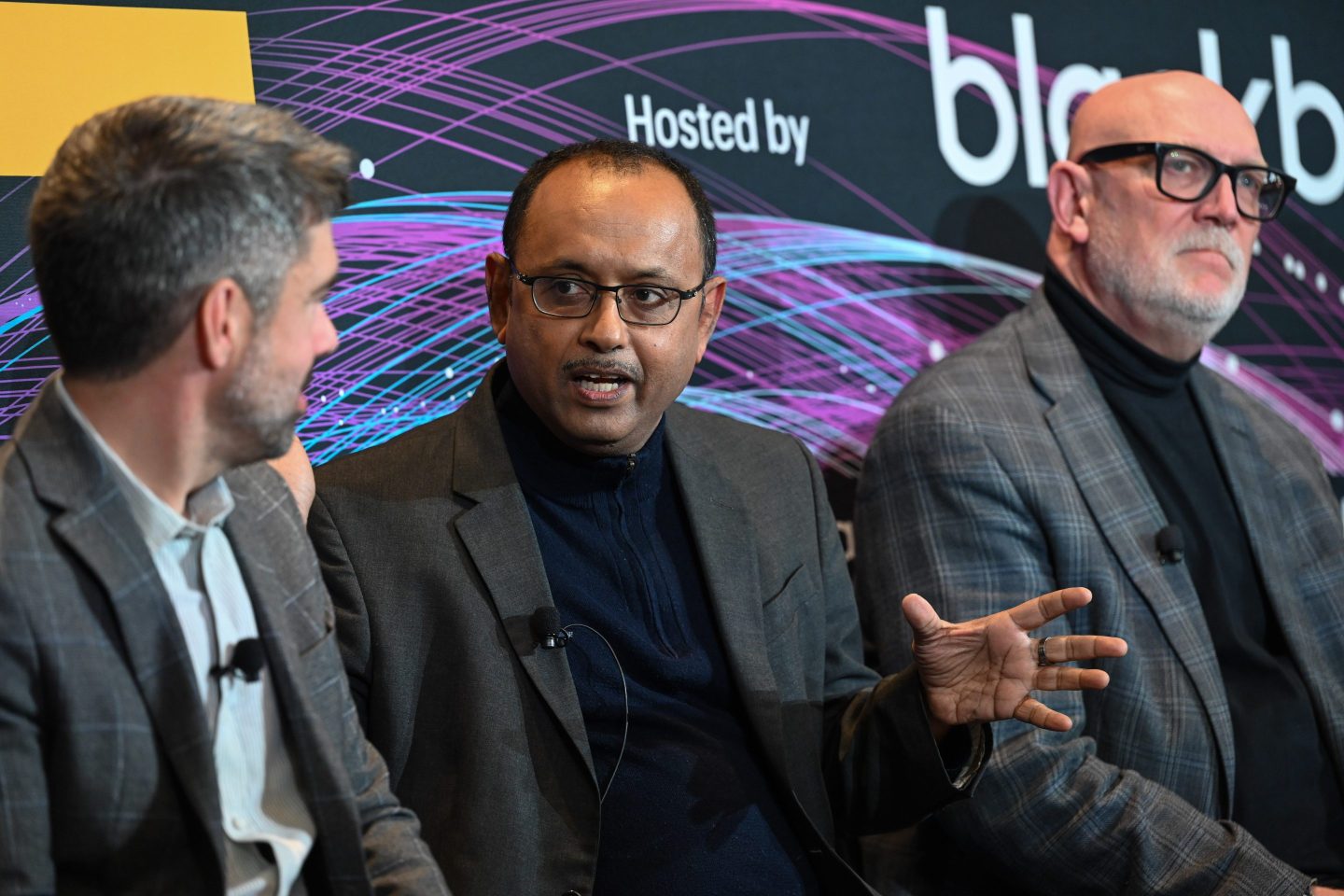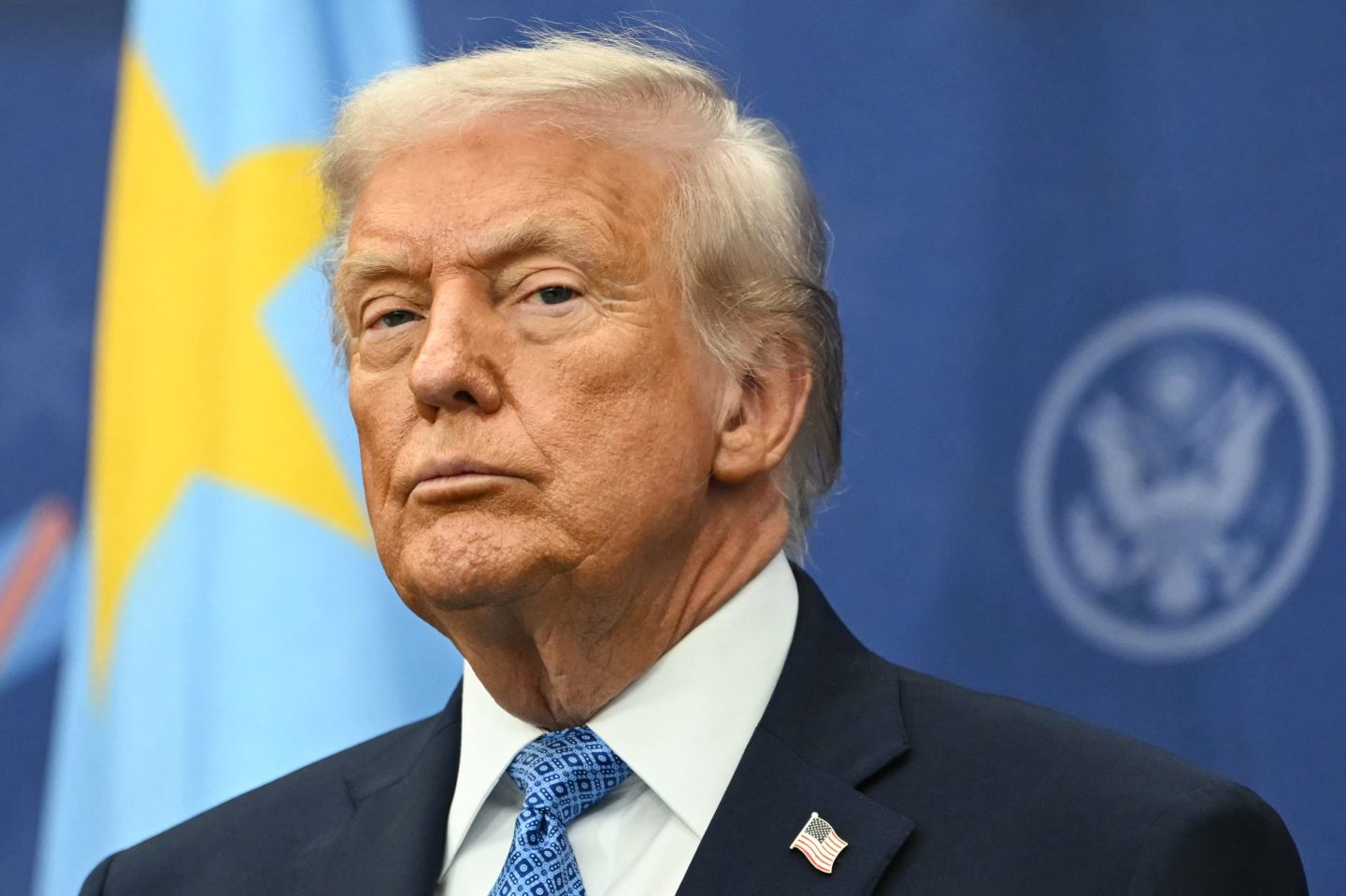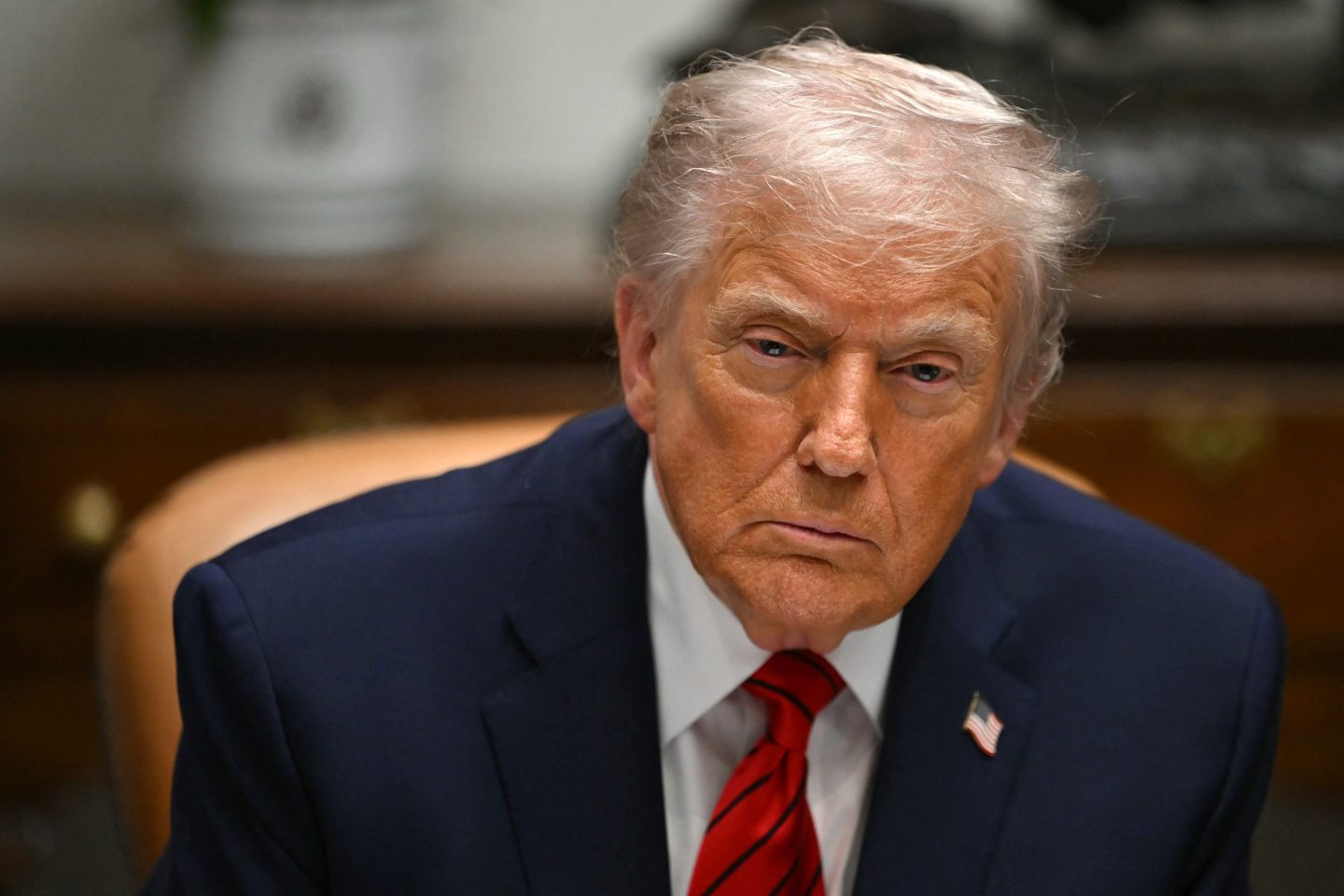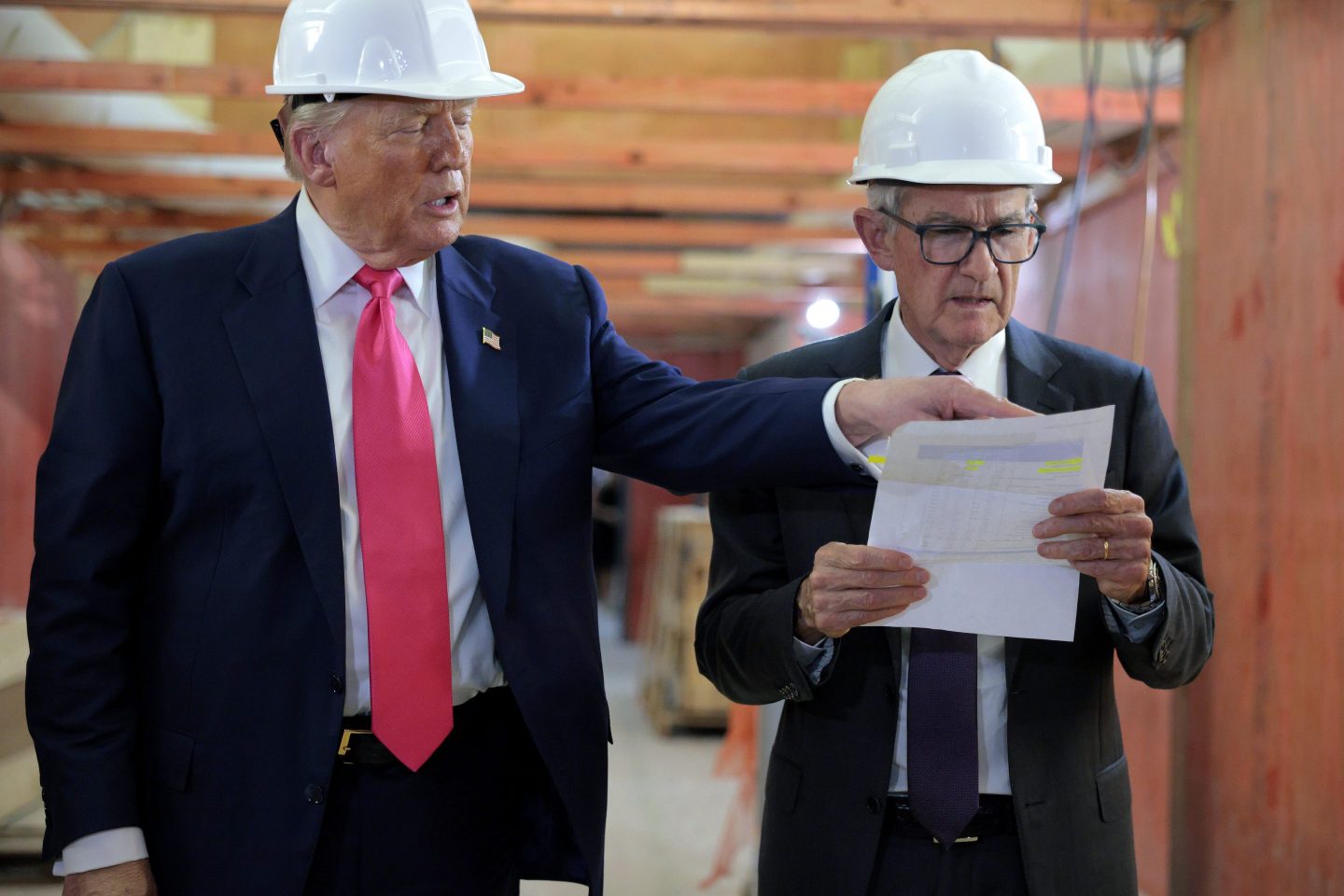Shiv Rao loves a side quest.
Like in a video game, Rao is determined to chase after unexpected detours that aren’t connected to the main mission—at least, not obviously. Last year, the first time I had coffee in-person with Rao, CEO and founder of healthcare AI startup Abridge, he was on a particularly ambitious side quest. As we walked out into a balmy Santa Monica morning, Rao earnestly asked me: I’ve been trying to track down Rick Rubin. Do you know how to find him?
I was honored and bemused that Rao thought that there was a snowball’s chance I had any way of finding Rubin, perhaps music’s most influential (and enigmatic) producer. Both a guru and a ghost in popular culture, Rubin melts into the artists he works with—think: everyone from the Beastie Boys and Eminem to Johnny Cash and Adele. Though he has been known to occasionally give interviews, Rubin is frequently described as reclusive. He likes to be hard to find.
At first glance, Rao’s mission to meet Rubin is a deeply surprising side quest. But Rao’s career is in many ways a testament to the value of branching out. After spending most of his professional life as a full-time cardiologist, Rao in 2018 founded Abridge, now valued at $2.75 billion. He remains a practicing physician, a calling he’s devoted to and which helps inform his “day job” running the more than 200-person startup.
“I think side quests serve the long game if they’re strategic,” Rao told Fortune. “So much of what this company’s about is mission, and about chemistry. I think being able to inject the right ingredients in the right order is what creates magic over time.”
Rao has had all kinds of side quests through the years. For example, Rao specifically tracked down New Zealand-based interior designer Rufus Knight, known for his theatrical and tactile spaces, to design Abridge’s offices. In another mission, Rao convinced Bay Area magician David Gerard to join the company’s cap table. (His impetus was Arthur C. Clarke’s famous line: “Any sufficiently advanced technology is indistinguishable from magic.”)
But Rubin was unique, his work a prism through which Rao has been thinking about the possibilities at his own company. “What’s amazing about Rick Rubin is his domain transfer,” Rao told Fortune. “He can connect the dots between the Beastie Boys, the Avett Brothers, and Aerosmith. He’s a reflection. He’s trying to reflect who the artist is, trying to beam back the best of them. And that’s what we want Abridge to do for doctors.”
Abridge—which uses AI to turn doctor-patient conversations into structured clinical notes, integrating with health records in real-time—is currently deployed across more than 100 U.S. health systems. And the company now looks set to expand further: Abridge recently raised a $250 million Series D, led by entrepreneur-investor Elad Gil and VC firm IVP. The company has been on an unmistakable rise through the AI boom, after years of setbacks and closed doors amid an increasingly dire time in healthcare marked by public anger and political uncertainty.
For Rao, the success that Abridge is now seeing is a validation of perseverance, technology trends, and a wide-ranging philosophy that has distinguished the startup from its competitors. And in a market as fast-moving as AI, the physician-entrepreneur knows the next challenge is already underway.
“These last couple months, the thing I’ve been waiting for is finally happening, where doctors are using Abridge as a verb,” said Rao. “They’re saying, ‘I’m going to Abridge my conversation today’… It’s our job, with this announcement too, to define what that means.”
Two paths ahead
If you rewind to a teenage Rao, he didn’t necessarily scream “doctor.”
Rao grew up in Pittsburgh, a high school skateboarder who listened to outsider music—Fugazi, Minor Threat, Depeche Mode, and The Cure. He stayed near home to go to college at Carnegie Mellon, living at “the intersection of computer science and art” and deejaying in art museums. Rao made avant-garde music with virtual synthesizers, drawn to idiosyncratic leaders in the intelligent dance music movement like Aphex Twin and Autechre.
One day, Rao went to a lecture by famed architect William McDonough that focused on “how we’re all designers of the world.” McDonough told a story Rao still thinks about now—that of an Indian ophthalmologist who revolutionized cataract surgery by using a spinning platform to efficiently restore eyesight to patients. The ophthalmologist ultimately gave sight to more than one million people and passed the technique on to his daughter, who helped another 400,000. It may have been medicine, but it struck Rao as a profoundly creative act.
“I remember leaving that lecture just thinking about the two paths in front of me,” he said.
So, Rao ultimately went to medical school at the University of Michigan and, though he was dissatisfied with the “rote memorization,” he liked the work for its humanity and intensity. Today, he talks about cardiology as a privilege, one in which “you grow old with your patients.”
Dr. Joon Lee, now CEO of Emory Healthcare, hired Rao out of residency at the University of Pittsburgh Medical Center (UPMC) as an attending cardiologist. And Lee is adamant on this point: Rao may be a startup founder now, but he is, above all else, an excellent clinical cardiologist and always has been.
“Shiv was never going through the program to do something else,” said Lee. “He’s a doctor first, and always had the passion for what that could be.”
Still working as a doctor, Rao gained experience with venture investing at UPMC from 2013 to 2019. But Rao over time became increasingly fixated solving a problem he himself had—the ritual evening dictation of all the patients he’d seen that day. Doctors have an intimate, raw vantage point on the human experience. The profession perhaps fittingly has a long history of multi-hyphenates, from “doctorpreneurs” to storied writers like Anton Chekhov and William Carlos Williams.
When Rao founded Abridge in 2018, his earliest believers were similarly multidisciplinary. Now Abridge’s COO, Julia Chou was a former Googler who stepped away from tech and into cooking school, at one point working in the kitchen at San Francisco Michelin-starred restaurant Octavia. And Zack Lipton, Abridge’s CTO, was a machine learning professor at Carnegie Mellon—who’d put aside a life as a professional jazz saxophonist. I asked Lipton: Do you ever stop being an artist?
“You can have a narrow lens on what it is to be an artist,” Lipton said. “But I think there’s another lens—that to be an artist is to be someone with a voice, someone with commitments about creativity and agency. Someone with a sense of style and aesthetic commitment about what they’re building.”
Their shared expansive curiosity and unconventional backgrounds drew Rao, Chou, and Lipton together, and kept them close through the earliest years of the company, when success seemed unlikely.
‘Hope camels’
Union Square Ventures managing partner Andy Weissman, a longtime investor with an irreverent streak, found Rao interesting from the jump. For one, he was struck by Rao’s resolve that medical apps could be consumer-app beautiful, and his insistence that Weissman’s previous investments in companies like SoundCloud made him a great fit for Abridge. He didn’t know for certain if Rao could be a success—and says any investor who tells you they just look at an entrepreneur and “know” is full of it—but he did find both Rao and the idea intriguing.
“He eventually dragged me into a vision of the future that was interesting and delightful,” said Weissman. “At that point, I thought, okay, you’re a doctor, but also a venture investor. You’re also off-the-beaten-path in Pittsburgh. So, maybe this weird Pittsburgh-steel mill town-Andy Warhol-thing would enable you to build the most beautiful consumer app for medicine. It’s an absurd proposition, but maybe it could come to that.”
Rao tells me he pursued Weissman after following his varied tweets about music — posting about country one day to black metal the next — figuring this signaled a propensity “to abstract and think outside the box.” When Weissman backed Abridge at seed in 2019, he cautioned Rao and the team it would be a long haul. And those first couple years were hard, said Rao.
“We joked we needed to be hope camels, that a drop of hope should get us through a desert,” he said. “Anytime we had a win, we’d publicize it, trumpet it, make sure everybody in the company got that little slice of hope, that oxytocin, purpose and fulfillment to get through.”
Rao has held firm on Abridge’s commitment to Pittsburgh, a contrarian move that has served as a tether for him. The company’s name is prismatic. At the surface, it refers to abridging conversations and workflows in medical transcription. Another level down, it’s about “being able to connect the dots between AI and healthcare, that’s a bridge that we’re building,” said Rao. And there’s the link to Pittsburgh, which is known as the City of Bridges.
Read more from Fortune
‘Business is the most fascinating kind of art’
Abridge has been on the rise at a tough time in healthcare, one that is likely only to get tougher.
“There aren’t enough doctors, and 60% of medical students don’t intend to go on to practice,” said Chou, who’s been Abridge’s COO since 2022. “As patients, we’ve all seen the increase in the time it even takes to get an appointment. So, access to care is difficult, as the cost of care keeps going up. We’re really in need of deflationary forces to help streamline inefficiencies, and take care of people.”
Rao thinks Abridge’s role is to “in our own humble way, deliver better experiences to both sides, unburdening clinicians to just focus on the one person that matters the most, their patient.”
Abridge’s growth over the last few years has extended the company across the U.S. and to some of healthcare’s biggest names. (One example: Healthcare giant Kaiser Permanente says that 63% of its doctors are now active Abridge users and that the company’s tech has transcribed and summarized more than 6.3 million patient visits.) Through it all, Rao continues to practice as a cardiologist—he’s on-call Thursdays and takes on shifts one weekend a month. To Somesh Dash, IVP general partner, this matters as much as ever.
“It’s one thing to theorize about the Hippocratic Oath, about serving patients and providers,” said Dash, who’s backed Abridge twice. “It’s another to be a provider, who has continued living near elderly parents, who sees the healthcare system from every side and through every dimension. There’s nothing more present to me than walking the walk, and not just talking the talk.”
Healthcare needs to evolve, which means evolution is equally necessary for the people and ideas in it. It’s a process Rao is committed to—and that’s why he has side quests.
“How I think about it is this: You always want to acquire chips on your shoulder,” he said. “Then, you retire them relatively quickly, because if you leave a chip for too long it gets toxic and becomes who you are in a deeper way. So, with side quests, you’re always sprinting, not just for the long-term mission. You’re also winning in the micro.”
Nine months after meeting Rao for coffee, he shocked me, showing me a picture of him and the elusive Rubin, sitting across from one another. “I completed the side quest,” he said, grinning wildly. Rao and Weissman described the scene: Abridge hosts an annual event called The Conversation, last year appropriately taking place in Pittsburgh’s Carnegie and Andy Warhol Museums. (Warhol famously said: “Being good in business is the most fascinating kind of art.”)
For the event, Rao persuaded Rubin to sit for an interview. Rao recalls: “His shoes are off, and he’s sitting on the couch in full sage-guru mode.” Rubin directly addressed the audience of suited healthcare executives.
“Rick Rubin looked right out at them,” said Weissman. “And he said: ‘You’re all creative people. This is an incredible room of creative talent, and I’m so excited to talk to you about creativity today.’” This meant a lot to both Rao and Weissman (and I imagine to at least a few healthcare executives).
And that’s the thing about side quests—they sometimes reveal themselves as compulsory. In Rao’s case, a physician’s experiences with medical transcription turned a curiosity into a mission. In a moment rife with anxiety around artificial intelligence and what it means for ingenuity to be genuinely human, Rubin’s expansive definition of creativity is essential. Because an entrepreneur’s well-chosen diversion can let light in, and sometimes becomes vital to the main adventure.
So now, somewhere in Pittsburgh, Rao is searching for his next side quest.


